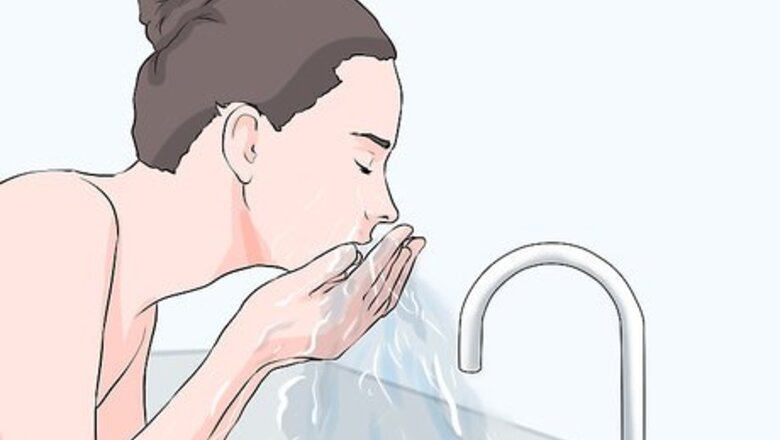
views
Cleansing and Exfoliating Your Face
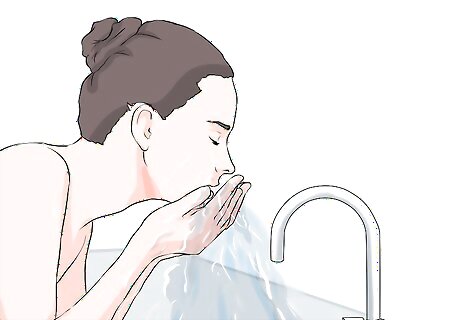
Cleanse your face. It’s important to start with a clean face before you exfoliate. Wet your face with warm water, and massage a cleanser that fits your skin type into your skin. Rinse off the cleanser with lukewarm water. You can pat your face with a clean towel so it’s not dripping but it’s not necessary to dry it completely. You want your skin to be slightly damp when you exfoliate. For oily skin, choose an oil-free gel or foaming formula that will remove excess oils and deep clean your pores. For dry skin, choose a cream or oil-based formula that will cleanse your skin without stripping it of moisture. For sensitive skin, choose a fragrance-free, non-irritating cream formula. For acne-prone skin, choose an oil-free formula with acne fighting ingredients, such as salicylic acid.
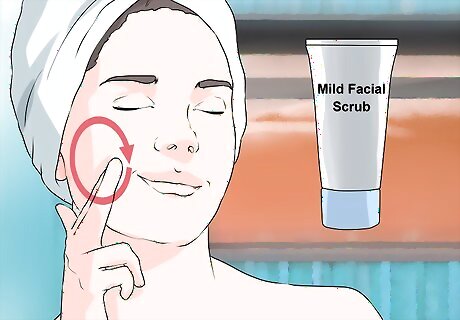
Apply a gentle scrub. Once your face is clean, take a small amount of a mild facial scrub and rub it over your face. Massage it into your skin in upward circular motions for 30 seconds to 1 minute, paying special attention to areas where the skin is especially rough, dry, or prone to clogged pores. Opt for a facial scrub that contains gentle microbeads rather that crushed fruit or nut shells. It will be less likely to irritate your skin. If you have oily or acne-prone skin, you can exfoliate two to three times a week. If you have normal or combination skin, you can exfoliate up to two times a week. If you have dry or sensitive skin, you shouldn’t exfoliate more than once a week.
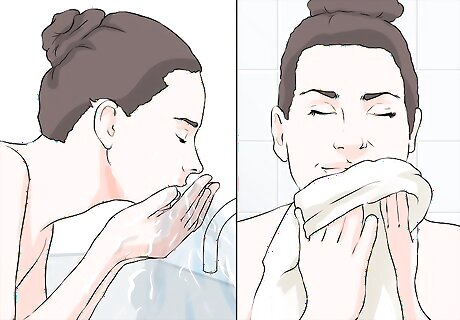
Rinse your face with water and pat dry. After you’ve massaged the facial scrub into your skin, splash your face with warm water to wash it off. Make sure to remove all of the residue before patting your face dry with a clean towel. If you want to exfoliate without steaming and using a mask, follow up the scrub with your usual serum and/or moisturizer.
Steaming Your Face

Bring some water to a boil in a pot. Fill a large saucepan with 1 to 2 cups (237 ml to 473 ml) of water, and place it on the stove. Turn the heat to high, and allow the water to come to a complete boil, which should take 5 to 10 minutes. If you prefer, you can boil the water in a tea kettle.

Pour the water into a bowl and add essential oils. Once the water comes to a boil, remove it from the stove. Carefully transfer the water to a large bowl, and mix in the essential oils of your choice. Allow the water to steep with the oils for a minute or so. For dry or mature skin, add rose and/or jasmine essential oils to the water to soften your skin. For acne prone skin, add tea tree and/or rosemary oil to the water for their antibacterial properties. For combination skin, add grapefruit oil to the water to help balance your skin. For sensitive skin, add geranium and/or lavender oil to the water to help soothe your skin. You can also add eucalyptus oil to the water if you’re having trouble with allergies or a cold. It can help with congestion.
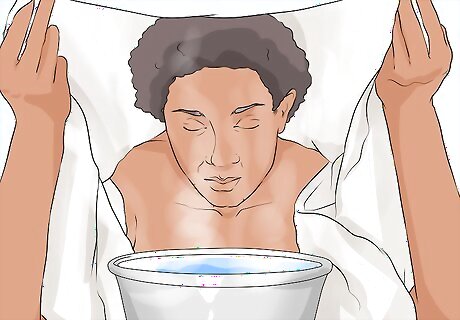
Drape a towel over your head and hold your face over the bowl. When the water and oil have steeped for a couple of minutes, place a large towel over your head. Move your head over the bowl so your face is approximately 5 to 10 inches (13 to 25 cm) from the steam. Make sure that the towel is covering your head and the area around the bowl, so the steam is trapped and focused on your face. Be careful not to move your face too close to the steam or you may burn your skin. EXPERT TIP Joanna Kula Joanna Kula Licensed Esthetician Joanna Kula is a Licensed Esthetician, Owner and Founder of Skin Devotee Facial Studio in Philadelphia. With over 10 years of experience in skincare, Joanna specializes in transformative facial treatments to help clients achieve a lifetime of healthy, beautiful, and radiant skin. She is also a contributing author for the prestigious Les Nouvelles Esthetiques & Spa magazine and has been featured in a number of magazines including InStyle. Joanna Kula Joanna Kula Licensed Esthetician Try using your face wash along with the steam to get your skin ultra-clean. Joanna Kula, Lead Esthetician at Rescue Spa PA, says: "Steam is a great way to deep clean and purify your skin. First, do a gentle cleanse without the steam to remove dirt, makeup, and oil. Then, add the steam and wash your face again, but this time, spend a few minutes massaging in your cleanser."
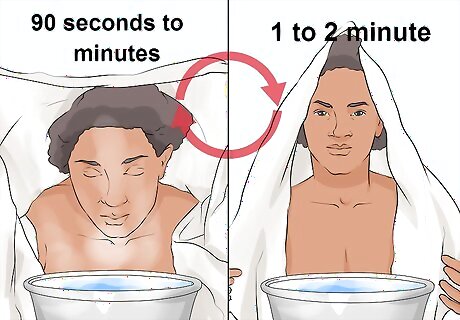
Steam your face in intervals. Hold your face over the steam for 90 seconds to 2 minutes. Take a 1 to 2 minute break, and then return your face to the steam. Repeat the process for a total of 5 2-minute steaming sessions. If you find that your skin is getting too hot or starts to feel like it’s burning, immediately stop steaming your face.
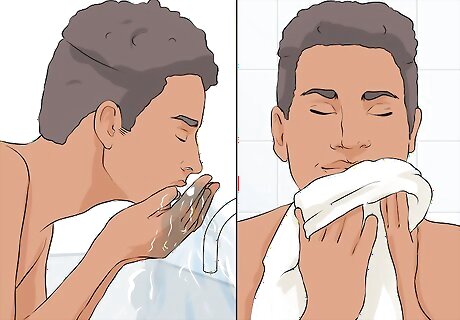
Rinse your face and pat dry. When you’re done steaming your skin, splash your face with warm water to rinse it. Pat your face dry with a clean towel so it’s ready for a mask. If you plan use a clay mask next, it’s not necessary to dry your face completely.
Applying a Facial Mask

Select a mask that matches your skin type. Just as with your facial cleanser, it’s important to choose a face mask that suits your skin type. You can choose from among clay, gel, cream, and sheet masks that remove excess oil, treat acne, hydrate, brighten, and soothe the skin. Clay-based masks are best for oily and acne-prone skin because they absorb excess oil and deep clean the pores. They can also tighten enlarged pores. Hydrating cream masks are best for dry, dehydrated, or mature skin. They typically contain oils that add moisture to the skin. Gel masks are good for most skin types, including sensitive skin. They are usually oil-free but can still hydrate and soothe the skin. Sheet masks are thin cloth or paper masks that are saturated with liquid ingredients that treat a variety of skin issues. You can find hydrating, exfoliating, and brightening formulas.

Smooth the mask over your face and let it dry. Once you’ve chosen a mask, carefully apply it to your face with clean fingers. You can also spread it over your neck and decollete if you like. Allow it to dry according to the instructions on the packaging. In most cases, you’ll need to leave the mask on for 10 to 20 minutes. If you prefer, you can apply the mask to your face with a brush. A flat synthetic foundation brush works well. Follow the instructions on the mask’s packaging to determine how thick or thin a layer you should apply. If you’re using a sheet mask, remove it from the packaging and place it over your face. Press it down gently to ensure that it’s adhering to your skin. To keep it from falling off, it’s best to lie down when you’re wearing a sheet mask.
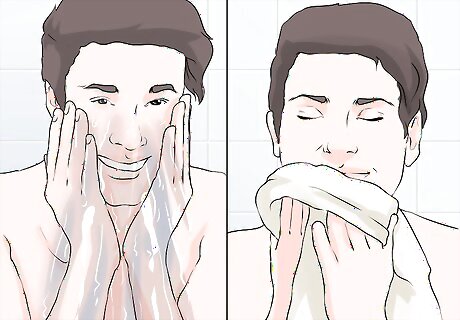
Wash the mask off with water and pat dry. When the mask has dried, splash your face with warm water to remove it. It may help to dampen a washcloth to remove it, especially if you’re using a clay mask. Use a clean towel to pat your face dry. Consult the mask’s packaging to be sure that you’re using the proper procedure for removing your mask. If you’re using a sheet mask, there’s no need to rinse it off. Remove the sheet to dispose of it, and rub the liquid residue into your skin until it’s absorbed.

Apply your usual moisturizer. After you’ve removed the mask, splash your face with cool water and dry your face once more. Massage your usual serum and/or moisturizer over your skin for healthy, glowing skin. You can use a toner before you apply the moisturizer if you want.




















Comments
0 comment